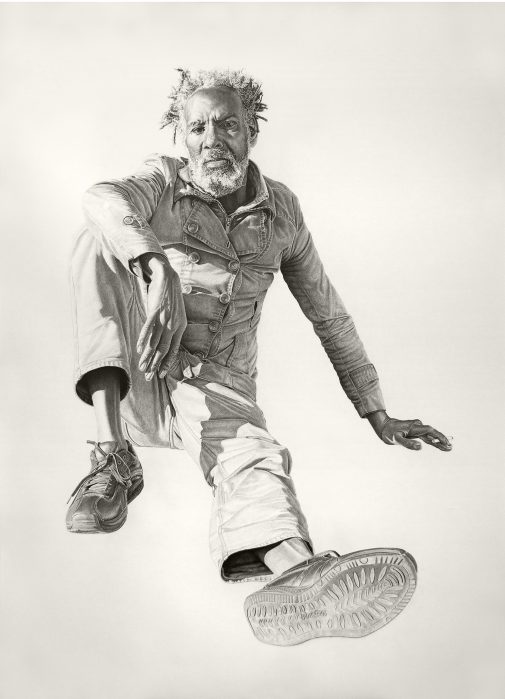Alumnus Wins Prestigious National Award
By
Westmont

The Smithsonian’s National Portrait Gallery (NPG) has recognized Westmont alumnus Joel Daniel Phillips ’11 for his submission to the Outwin Boochever Portrait Competition, the most prestigious portrait competition in the United States. Phillip’s portrait, “Eugene #4,” a 6-foot-tall charcoal and graphite on paper, is one of seven chosen to win a prize at the opening awards March 10, 2016. More than 2,500 artists submitted portraits for the triennial, juried exhibition, which awards $25,000 to the first-prize winner as well as a commission to create a portrait of a living individual for the museum’s permanent collection.
“Most of my subjects are individuals whom society has a tendency to bypass or overlook,” Phillips says. “This body of work started as an exploration of my particular street corner, a corner which many San Franciscans avoid due to its visible homelessness, drug abuse, refuse and other social ills.”
Phillips has been working and living as a fine artist in the Bay Area since graduating. He’s enjoyed a string of successes, including one-man shows in San Francisco and Oslo, Norway. His work is currently on display at the Miami Project in Miami.

“Eugene #4” will be included in the exhibition at the Smithsonian’s National Portrait Gallery (NPG) from March 12, 2016, through Jan. 8, 2017. It will then travel to four host museums across the country from February 2017 through August 2018.
“I was drawn to Eugene because he seems to carry an unavoidable dignity despite his circumstances,” Phillips says. “He contains a deep melancholy that is both tragic and compelling. I sat down with him on the sidewalk before shooting the reference images that became this drawing. Eugene told me how he ended up becoming homeless, and said simply: ‘My mother died, my father died, and my brother died. That was a bad year — my brother was a good man.’
“When I first graduated from Westmont I quite honestly felt I had a lot of catching up to do. Most of my peers who went to art schools graduated with an applicable and polished set of technical skills — something that Westmont’s limited amount of art courses and heavy emphasis on general education courses didn’t seem to cater to. In the time since, however, I have realized time and again that the technical skills are easier to learn outside of college, and the broader brushstrokes of humanities, critical thinking and writing are much more valuable and have proven to be unique commodities.”
Filed under
Academics, Admissions, Alumni, Arts at Westmont, Campus News, Faculty and Staff, Featured, Press Releases, Student Stars